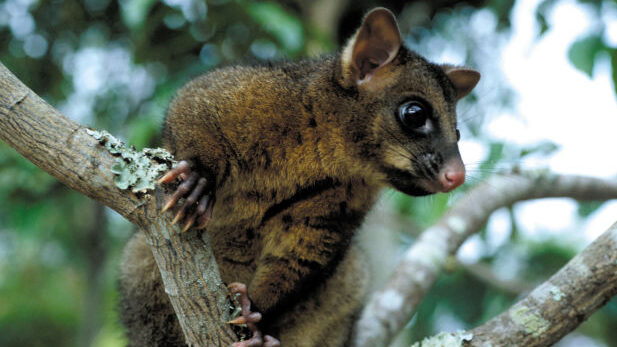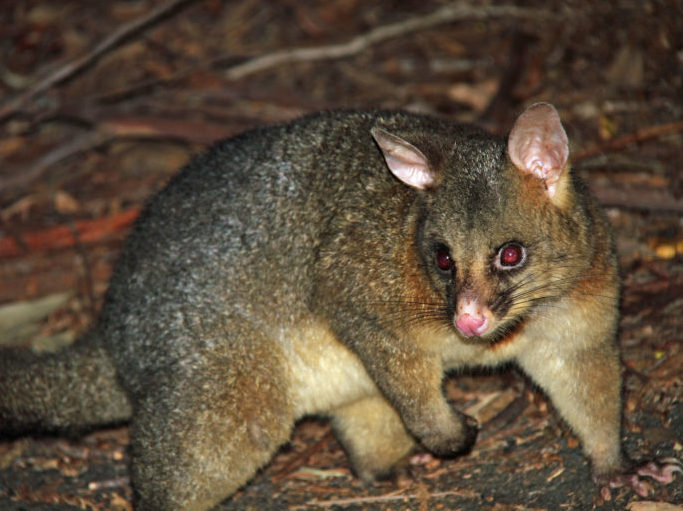Landcare Research scientists have published some fascinating research recently looking at the damage possums do the forest canopy and the surprisingly long time it takes for larger trees to recover. The first paper was published in Ecology and Evolution earlier this year and full access is freely available online.

Penelope Holland, Andrew Gormley and Roger Pech – all based at Landcare Research’s Lincoln facility near Christchurch, looked at the impact of possums on tree survival in mixed forests. The possum story is complicated by the fact that possums have their favourite foods and also prefer to feed on large trees, so will graze some trees heavily and leave other nearby species alone. Thus the impact of possums varies depending on the species of trees at a particular site and the age of those trees.
“Damage thresholds for different tree species and tolerable levels of herbivore abundance must be tailored to individual sites.”
Holland et al looked at tree survival for five different favoured tree species in 12 different situations and created a mathematical model which takes a variety of factors into account and which allows the impact of possums to be calculated at an individual site level. The model makes it possible to estimate, with a good degree of certainty, the level that possum numbers need to be reduced to, in a particular forest, for their impact to be non-fatal/tolerable to the trees – the ‘tree mortality threshhold’.
Possum abundance was measured at each site using the trap-catch index method, with captures expressed as a percentage of trap-nights.

“Reducing possum density (TCI) at a site reduces the annual probability of tree mortality, but the relationship is nonlinear, and differences in foraging behavior mean that the benefits of herbivore control to a particular tree species varies between sites.”
“Model results indicated it is likely that possum browse was the primary cause of all tree mortality at nine of the 12 species-site combinations, allowing us to estimate site-specific thresholds below which possum population numbers should be reduced and maintained to keep tree mortality under a predetermined level, for example 0.5% per year.”
The model they created can be used to assess a particular site or a particular species so that a ‘management action threshold’ can be determined. It can also be easily adapted to other species not used in the initial study. Since the ‘tree mortality threshold’ will vary depending on the tree species, the threshold for the most vulnerable species can be calculated at a location and this figure used to calculate the target level for possum (or other herbivore) control.
“Results for multiple plant or herbivore species at a single site can be combined to create conservative, site-wide management strategies, and used to: determine which sites will be affected most by changes in herbivore abundance; quantify thresholds for herbivore management; and justify expenditure on herbivore control.”
The model can also be used to ensure that limited funds for pest control are spent effectively and economically:
“Because it can quantify the nonlinear relationships between herbivore density and browse damage on multiple species at different sites, the model facilitates a less conservative approach to herbivore management compared to a risk-averse approach aimed at reducing herbivore density as much as possible at all sites: for example, some sites may not need any control despite having higher herbivore densities than others, due to the forest composition resulting in a more uniform browse impacts.”
This research paper is published in Ecology and Evolution and is freely available:
Species- and site-specific impacts of an invasive herbivore on tree survival in mixed forests (2016)
In a second paper published earlier this year, Landcare Research scientists looked at the long-term response of canopy trees to removal of possums.
“We monitored indices of possum density, possum browsing, tree foliage cover and crown dieback for 20 years following initiation of possum control in 1994 that repeatedly reduced possum densities to near zero every 5–6 years and kept the population below 35% of pre-control levels over the entire period.”

The research looked at possum browse on three tree species favoured by possums. At the time of the first control operation, observable browse was recorded on 20-49% of individual trees of these three species.
“Those percentages fell to zero after control and never exceeded 2–10% for individual species over the next 19 years. We recorded significant increases in foliage cover attributable to recovery from defoliation by possums for all three species during the first 10 years.”
For trees that had initially been heavily browsed, the increases in foliage cover were particularly dramatic – up to 89%!
“Large increases in foliage cover occurred on individuals that were heavily browsed in 1994 (mean increases: 36–89%), but mean population increases were modest (3–19%) because only 10–19% of trees were initially heavily browsed. Twenty-year mortality rates were similar for plants with, or without, initial possum browsing, indicating no residual impact of pre-control browsing on tree mortality.”
What is particularly sobering is the time it took large canopy trees to recover fully from possum browsing.
“Times for full recovery of crown foliage cover varied from 10 years for the youngest trees and faster growing species to more than 20 years for mature individuals of the slowest growing species.”
This research is published in Austral Ecology. Only the abstract is freely available online.

